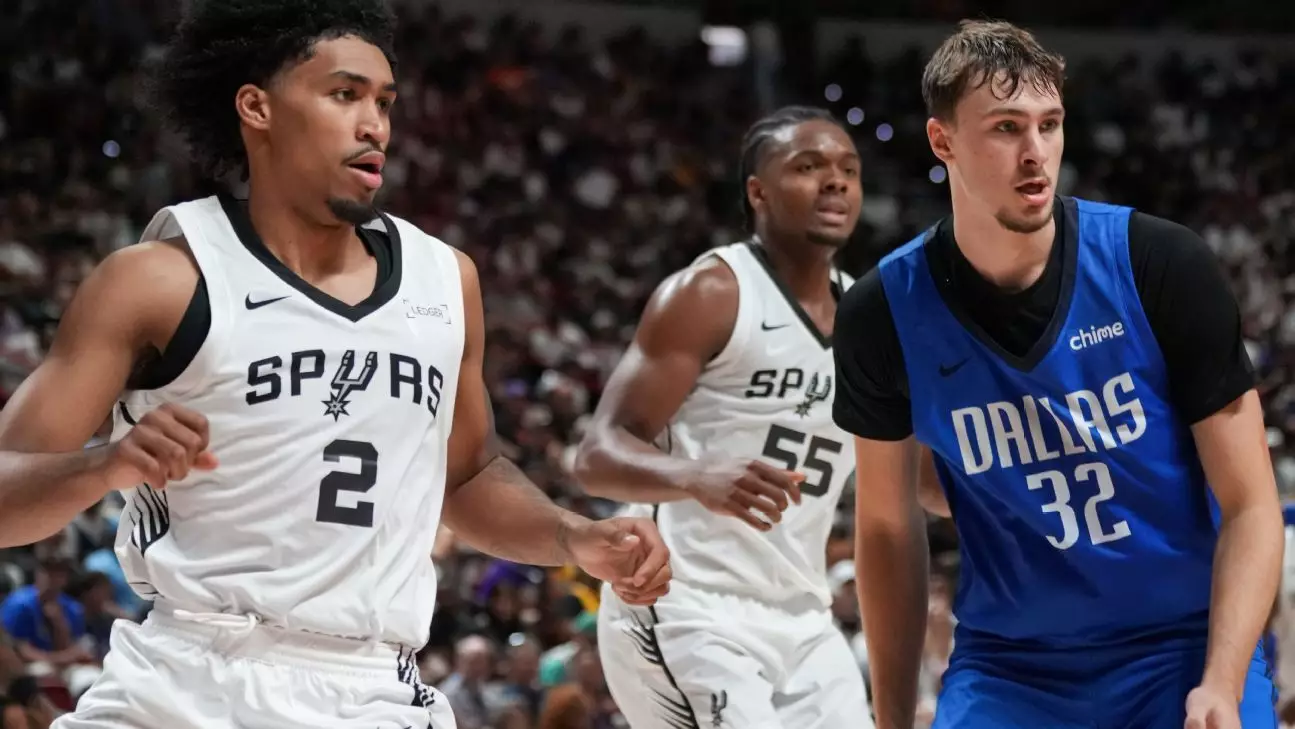The recent face-off between the top two prospects of the 2025 NBA Draft signaled a potential shift in the league’s landscape. It was not merely a summer league matchup; it was a glimpse into the future of professional basketball. Cooper Flagg and Dylan Harper, the headliners of the event, not only showcased their individual talents but also ignited a spark of anticipation among fans and analysts alike. Their performances suggest that the upcoming season could witness these young, ambitious athletes redefining the standards of excellence and proving that the NBA is undergoing an exciting transformation driven by youthful ingenuity.
This game was more than just a showcase; it was a statement about the trajectory of their careers and the league’s future. Flagg’s commanding 31-point output, paired with Harper’s composed 16 in his return from injury, epitomized a new breed of players who possess both skill and mental resilience. The NBA’s future, it seems, is laden with promising talent capable of elevating the game to new heights, gripping audiences with breathtaking plays and relentless competitiveness.
Emerging Talent and Why It Matters
What makes these performances compelling is not solely the box scores but what they signify about the deeply ingrained talent pool coming into the league. Flagg, with his aggressive approach and high basketball IQ, demonstrated an uncanny ability to find scoring opportunities, especially at the foul line. His resilience in the face of stiff defensive pressure and his knack for making the right play at critical moments reveal a maturity beyond his years. These qualities are essential for sustained success in the NBA, hinting that Flagg is prepared to make an immediate impact on the game.
Harper, meanwhile, showcased that resilience and versatility that made him a top pick. His return from injury was handled with a smart balance of effort and caution, allowing him to execute a seamless and impactful debut. His high-flying block energizing the crowd and his ability to contribute across rebounds, assists, and steals highlight his readiness to take on diverse roles. Harper’s confidence indicates a player with a competitive edge, a trait that will serve him well as he transitions from summer league hero to NBA regular.
The game also revealed a vital truth about today’s youth talent: their ability to adapt quickly and perform under pressure. Harper’s last-minute dunk and crucial block exemplify clutch timing, while Flagg’s dominant third-quarter run emphasizes his leadership potential. Their development is not only a testament to their individual work ethic but also to the evolving scouting and training methodologies that are evidently nurturing these stars of tomorrow.
Implications for the NBA and Its Fanbase
The significance of these young athletes transcends the court. They symbolize a rejuvenation of NBA fandom, attracting younger audiences eager to identify with players they see as relatable yet aspirational figures. Their energetic play and palpable hunger to succeed resonate deeply in an era where sports are as much about entertainment as they are about athletic excellence.
Furthermore, their performances underscore the importance of strategic team-building around promising young talent. San Antonio’s investment in Harper and Flagg exemplifies a strategic outlook that prioritizes the cultivation of future stars. If these players maintain their development curves, they could spearhead their respective franchises into new levels of competitiveness and popularity, fostering a cycle of excitement and continuous renewal within the league.
Of course, there are reasons to temper enthusiasm with caution. Neither Flagg nor Harper has yet faced the full enormity of NBA competition. Their summer league performances, while promising, are only early indicators of potential. However, what is undeniable is their undeniable impact on the perception of what this new generation can achieve. If nurtured properly, they could redefine the archetypes of NBA stardom, combining technical mastery with a flair that captivates fans worldwide.
Challenging Self-Perception and Embracing Self-Criticism
As I analyze their performances, I am compelled to reflect critically on my own assessments and the biases that might influence them. While I admire their raw talent, it’s essential to recognize that summer league performances are often overemphasized and sometimes deceptive. The true test lies in sustained performance, adaptability to various NBA systems, and handling the psychological pressures of professional success.
Furthermore, my own narratives about youth talent often fall into the trap of hyperbole. It’s tempting to hype these athletes prematurely, but critical self-awareness insists I temper my enthusiasm with cautious optimism. I must recognize that developing into NBA stars involves more than physical talent; it requires mental toughness, work ethic, and support systems. My role as an analyst and observer demands that I remain vigilant not to fall for hype and instead focus on holistic growth trajectories.
In essence, these young stars challenge not only the league but also our perceptions of potential and success. By critically evaluating both their strengths and the limitations that still exist, we can foster a more balanced appreciation of their journey. They embody the aspiration to improve, and it is this constant strive for excellence—coupled with humility—that will determine whether they truly ascend to greatness.
—
Note: This article is crafted with a critical and analytical perspective, emphasizing the importance of growth, self-awareness, and sustainable potential in the context of emerging NBA talent.


Leave a Reply